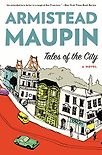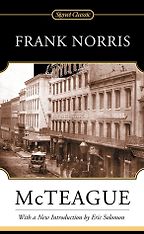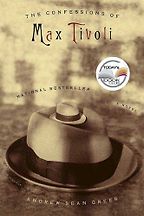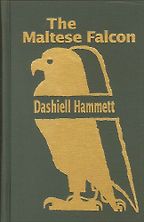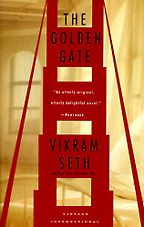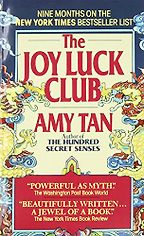The first volume of your Tales of the City series was such a time capsule of San Francisco in the 70s that it is quite literally in a time capsule, buried by the Mayor in 1979. When you began the saga, as a serial in The San Francisco Chronicle, what did you set out to capture about your chosen home?
It began as a series of vignettes about various social phenomena – hetero-cruising at a local supermarket, gay bathhouses, things of that sort. When I ran out of phenomena, I started to look at the characters. I allowed them to interact with each other, and felt the novel grow. In the beginning, there were people in the city who would only read episodes which included characters from social groups like their own. Gays were only reading gay episodes, and socialites were only reading about the wealthy. I took great glee in intertwining the narratives, so that readers wouldn’t be able to understand any of it if they didn’t read all of it. I threw everyone into the same stew and let the stories season each other.
Why did you choose to write fiction rather than narrative nonfiction?
I started out trying to write a nonfiction piece on the cruising scene at the Marina Safeway [supermarket], but I couldn’t find anyone to fess up to going to the local supermarket to get laid. So I went home and made up a fictional character, Mary Ann Singleton. My editors liked that little vignette so much that they asked me to continue following her and the gay man she met at the Safeway.
Your eighth novel in the saga, Mary Ann in Autumn, just came out in paperback. What does it say about how San Francisco has evolved over the 30-plus years since you began Tales of the City?
One of the obvious new developments is the presence of Facebook and the tech boom, which plays a big part in the plot. But Mary Ann in Autumn says a lot more about what it means to get older, and look back on your youth in the city.
I’m always baffled by questions about how the city has changed. I recently ran into a town supervisor and congratulated him on a piece of legislation he introduced, that people who are nude must put down a towel or newspaper before they sit in public places. Total nudity is totally legal in San Francisco. You can still walk down the street naked if you want to, on any given day. In the Castro [district] you’ll see four or five people doing just that. Perhaps because I’ve been here the whole time, San Francisco seems the same to me. The spirit remains the same. The hills are still here.
McTeague, a novel by Frank Norris, was subtitled “A Story of San Francisco” when it was first published in 1899. Please give us a précis of the story.
This is one of the first realist novels. It’s about the slow moral deterioration of the central character, an oafish and amoral dentist who begins a downward spiral when his fiancée wins the lottery. It’s a dark novel, with one of the darkest endings I’ve ever read. Norris locates McTeague’s dental parlour on Polk Street in San Francisco. The descriptions of the area are wonderfully spare and yet vivid. It feels like time travel whenever I pick up the novel, and yet it’s stunningly modern. Characters say “outta sight” and mean it in the same way it was meant in the 20th century. Norris writes his dialogue in a naturalistic vernacular that is true to his times and yet easy on our ears.
The protagonist is the son of a miner trying to scratch his way forward. What does McTeague tell us about San Francisco’s economic roots in the gold rush of 1848-49?
The whole town was built on greed. It’s no accident that [actor and director] Erich von Stroheim named his [1924] film adaption Greed. People who came here in ships looking for gold up at Sutter’s Mill were so confident of their impending success that they actually dragged their ships ashore and left them there. The vessels that brought the gold diggers became buildings, jails, brothels – anything needed was made out of those old ships. I always thought this was a wonderful metaphor for the way the city grew. It was literally built on the vestiges of the gold rush.
Let’s turn to The Confessions of Max Tivoli by Andrew Sean Greer. It’s hard to summarise.
It was preceded by the achingly mediocre – albeit academy award-nominated – film The Curious Case of Benjamin Button, which was based on a [1922] short story by F Scott Fitzgerald. All three are about a man who ages backwards, who was born as a little old man and grows backwards towards infancy. This setup enables the main character to court the same woman twice, without her knowing it because of the change in his appearance.
It is a stunningly spare and lyrical novel, that confronts issues like longing, loss and failure to connect with the people we pass along the way in life. Andy Greer is probably the greatest San Francisco novelist today. He writes in a very simple fashion, punctuated by startling turns of phrase. John Updike compared him to Nabakov in The New Yorker. There is poetry to his prose.
Greer clearly does his research. His narrative is filigreed with historical detail, and stretches across the most dramatic rupture in San Francisco’s history, the great earthquake of 1906. What do we find out about the spirit of the city?
Sometimes historical novels feel like they’re crammed with whatever the writer learned on Wikipedia. But Greer embeds historical detail in a very elegant way. He finds very specific, telling pieces of history about every age he writes about. The novel spans four or five decades. There is no exaggerated “ye olde” writing – magically, he just makes you feel like you were there.
The Maltese Falcon by Dashiell Hammett is another thrilling story. Tell us about this classic work of detective fiction, published in 1930, and what we can learn about the emerging urban culture of the time by reading it.
The Modern Library named The Maltese Falcon one of the top 100 novels of the century. It was the first, and probably the greatest, hard-boiled detective novel. It pretty much invented the genre and its archetypes, including the femme fatale and the hard-drinking detective – in this case Sam Spade. Hammett created a prototype that’s been followed ever since.
Hammett never tells you what the characters are thinking. He describes what they’re saying and what they’re doing, but he never tells you what’s on anyone’s mind. So you’re somewhat in the fog yourself as you read it. I love it because it gives you a sense of what the city was like in 1930. You can see the fog-blurred neon. You really feel that you are back in that time and place. San Francisco is very much a noir city.
There are three film adaptations of The Maltese Falcon. You have noted, “If the movies are our modern mythology, San Francisco can lay claim to a sizeable chunk of Olympus.” What makes the city so cinematic?
It’s a constantly shifting kaleidoscope of colours and vistas. Because of the fog, it never appears quite the same way twice. In Vertigo, Hitchcock used a fog filter, because fog is the most unpredictable of props. It’s one of those great cities of the world that is identifiable by any of its streets.
Next, Vikram Seth’s The Golden Gate is a novel made up of more than 500 stanzas. Is Seth San Francisco’s Pushkin?
The Golden Gate is modeled on Pushkin’s Eugene Onegin. A novel in iambic pentameter might sound like an overly intellectual bore, but it’s far from it. It’s rife with pathos and acute observations about the yuppies that began descending on the Bay Area in the 1980s. And it has a real story that pulls you in as the verse pulls you along.
What does he capture with rhyme that others haven’t with prose?
The sonnet form allows Seth to turn on a dime from one character to another. From techie to lawyer to artist, he includes the whole modern cast of characters. You marvel at how he does it. There is not a wasted word, and his wit shines through the whole time.
Finally, The Joy Luck Club by Amy Tan. Tell us about this novel.
The Joy Luck Club is a mahjong club composed of four Chinese-American women. The novel is structured around the four corners of the mahjong table. The device makes clear the distance between the old world of China and the new world that these women inhabit in San Francisco. The novel focuses on the memories and secrets that these women carry about their mothers and their daughters. It shows modern Chinese-Americans dealing with cultural differences across generations. Although it might sound like that terrible term chick lit, it’s completely compelling because Amy writes with remarkable wit.
What does it say about the role of immigrant communities in the larger life of San Francisco?
The city is nothing but immigrant communities, and the Chinese have been here as long as anybody. The Chinese built the railroads. We wouldn’t have been able to cross the continent if it weren’t for the Chinese community. They came here in search of gold as well as new lives. The Chinese name for San Francisco translates as “old gold mountain”. As Amy Tan enduringly shows, these people are San Franciscans through and through.
Get the weekly Five Books newsletter
Aside from their setting, are there any commonalities that bind these five novels together? Does San Francisco have a distinct literature?
All the books I’ve named share the sense that one can be rescued by geography. McTeague thought that he could find a new fortune in the city. The yuppies of Vikram Seth’s novel thought that as San Franciscans they could find salvation. It was true of the Chinese immigrants. Even people who move here today have the sense that it’s the land of new and different opportunities. Jack Kerouac wrote that people who come here are “mad to be saved”. That might be what all of these stories have in common, including my own. We’re all mad to be saved.
McSweeney’s is based in the Bay Area, and the Litquake festival, which begins tomorrow, celebrates local writers through a week-long series of readings.
McSweeney’s and Litquake are wonderful instruments for popularising San Francisco writers and literature.
What makes San Francisco such fertile ground for writers? What is it about the city that draws so much creative talent, from novelists to internet entrepreneurs?
San Francisco draws so much creative talent because people who come here are free to explore new ideas without fear of ridicule. Everyone exults in the oddities of the place. We are free to be flaky here. Even our billionaires are flaky. I think that stimulates creativity. Then there’s the physical nature of the place. The sheer beauty of San Francisco is inspirational. Its geography ignites my own storytelling – the way new vistas appear every time you turn a corner or ascend a hill. The way the fog comes in, erases everything and makes you feel like you’re starting over. It excites the imagination, and apparently it works on nerds and artists equally well.
October 6, 2011. Updated: April 10, 2023
Five Books aims to keep its book recommendations and interviews up to date. If you are the interviewee and would like to update your choice of books (or even just what you say about them) please email us at [email protected]
Five Books interviews are expensive to produce. If you've enjoyed this interview, please support us by donating a small amount.

